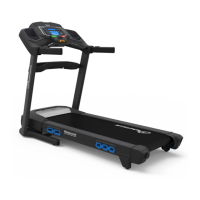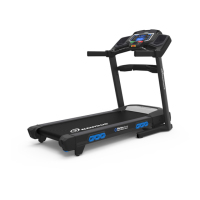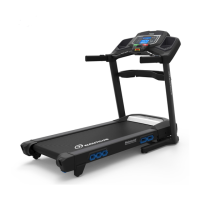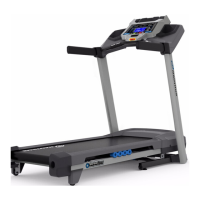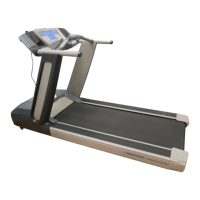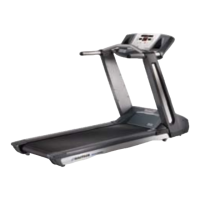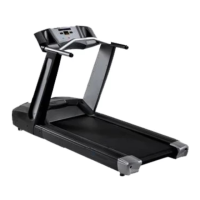31
Remote Heart Rate Monitor
MonitoringyourHeartRateisoneofthebestprocedurestocontroltheintensityofyourexercise.ContactHeartRate(CHR)
sensorsareinstalledtosendyourheartratesignalstotheConsole.TheConsolecanalsoreadtelemetryHRsignalsfroma
HeartRateChestStrapTransmitterthatoperatesinthe4.5kHz-5.5kHzrange.
Note:TheheartratecheststrapmustbeanuncodedheartratestrapfromPolarElectrooranuncodedPOLAR
®
compat-
iblemodel.(CodedPOLAR
®
heart rate straps such as POLAR
®
OwnCode
®
chest straps will not work with this equip-
ment.)
Ifyouhaveapacemakerorotherimplantedelectronicdevice,consultyourdoctorbeforeusingawirelesscheststrapor
other telemetric heart rate monitor.
Contact Heart Rate Sensors
ContactHeartRate(CHR)sensorssendyourheartratesignalstotheConsole.TheCHRsensorsarethestainlesssteelparts
oftheHandlebars.Touse,putyourhandscomfortablyaroundthesensors.Besurethatyourhandstouchboththetopand
thebottomofthesensors.Holdfirm,butnottootightorloose.BothhandsmustmakecontactwiththesensorsfortheCon-
sole to detect a pulse. After the Console detects four stable pulse signals, your initial pulse rate will be shown.
OncetheConsolehasyourinitialheartrate,donotmoveorshiftyourhandsfor10to15seconds.TheConsolewillnow
validatetheheartrate.Manyfactorsinfluencetheabilityofthesensorstodetectyourheartratesignal:
• Movementoftheupperbodymuscles(includingarms)producesanelectricalsignal(muscleartifact)thatcaninterferewith
pulse detection. Slight hand movement while in contact with the sensors can also produce interference.
• Calluses and hand lotion may act as an insulating layer to reduce the signal strength.
• SomeElectrocardiogram(EKG)signalsgeneratedbyindividualsarenotstrongenoughtobedetectedbythesensors.
• Theproximityofotherelectronicmachinescangenerateinterference.
Ifyourheartratesignaleverseemserraticaftervalidation,wipeoffyourhandsandthesensorsandtryagain.

